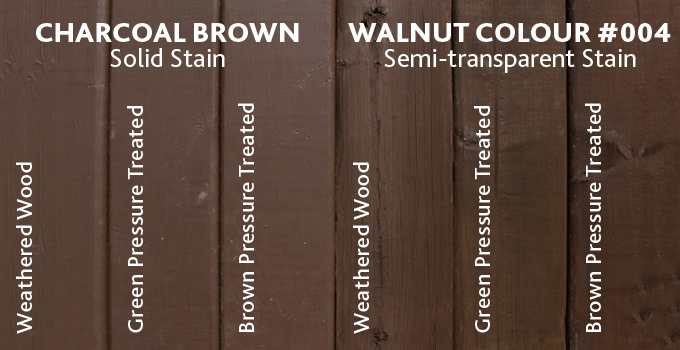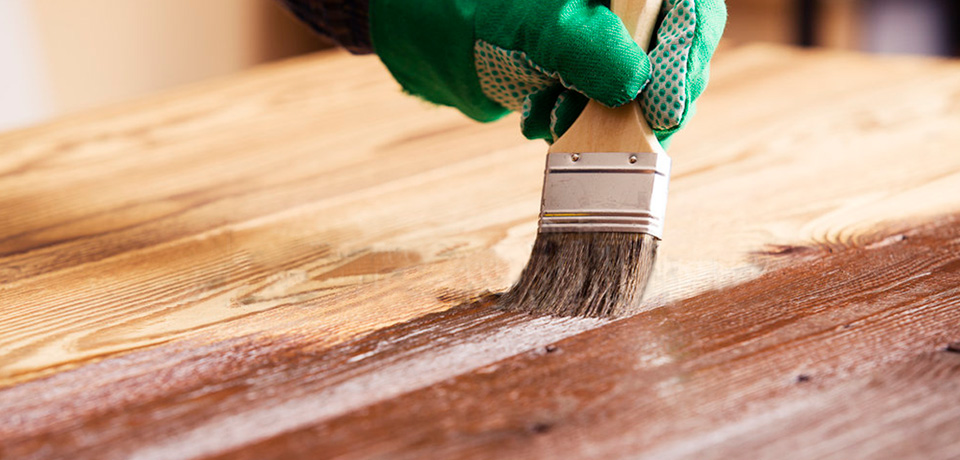Stain is a great way to rejuvenate a deck or fence and can help breathe new life into your outdoor living space.
It has the ability to penetrate wood and offers better protection from the elements than traditional paint. CO-OP® IMAGINE stains are easy to apply and clean up with little effort, as most are water-based latex products.
Like paint, stain is available in a range of colours that can dramatically impact the look of your outdoor space. Stain is also available in both solid and semi-transparent colours, which may appear different based on the type of wood used.

Solid Stain
Get the look of paint but the protection stain offers using a solid stain. With a solid stain, you won’t see the natural tones and grain of the wood; however, you will get a consistent finish and more vibrant colour.
The texture of the wood will still be visible, so if you desire a very smooth feel ensure you are doing additional sanding and prep work. When applying solid stain, be sure to mix the can often as the pigment falls to the bottom and opacity and colour consistency will change.

Semitransparent Stain
Semitransparent stain is ideal for adding colour to a deck or fence while still seeing the natural variations of the wood. Since the wood will still be visible through this type of stain, the colour you choose can change in appearance based on the original wood colour. Green or brown pressure-treated lumber, cedar or other natural woods will all impact the stain’s appearance in slightly different ways.
Preparation is another key aspect when applying semitransparent stain to previously stained wood. Semitransparent stain may be applied over semitransparent stain, although colour may be impacted. Semitransparent stain generally shouldn’t be applied over solid-stained wood as it’s designed to penetrate wood and won’t adhere to a solid coating. In this case, you will need to sand the wood surface before applying the new stain.

How to Select a Colour
The colour you select needs to complement your existing colours while also providing contrast. Determine exactly what will be stained and which colours will be next to the new colour. Ask yourself:
- Do I want a light or dark colour?
- Do I like browns, greys or a colour?
- If I want grey do I want a warm grey (with brown undertones) or cool grey (with blue undertones)?
- If I want brown do I like a red undertone or grey undertone?
As previously mentioned, the colour will look different based on the type of wood you’re staining (e.g. brown versus green pressure treated wood). Colour will also differ based on lighting conditions (e.g. time of the day, sunny versus cloudy day).
Always test your colour before staining an entire deck or fence. Stain a small area with two coats, let it dry and stand back to have a look. Once you’re confident that the colour works, it’s time to begin staining.
With a little bit of foresight, your next staining project is sure to be a success.








